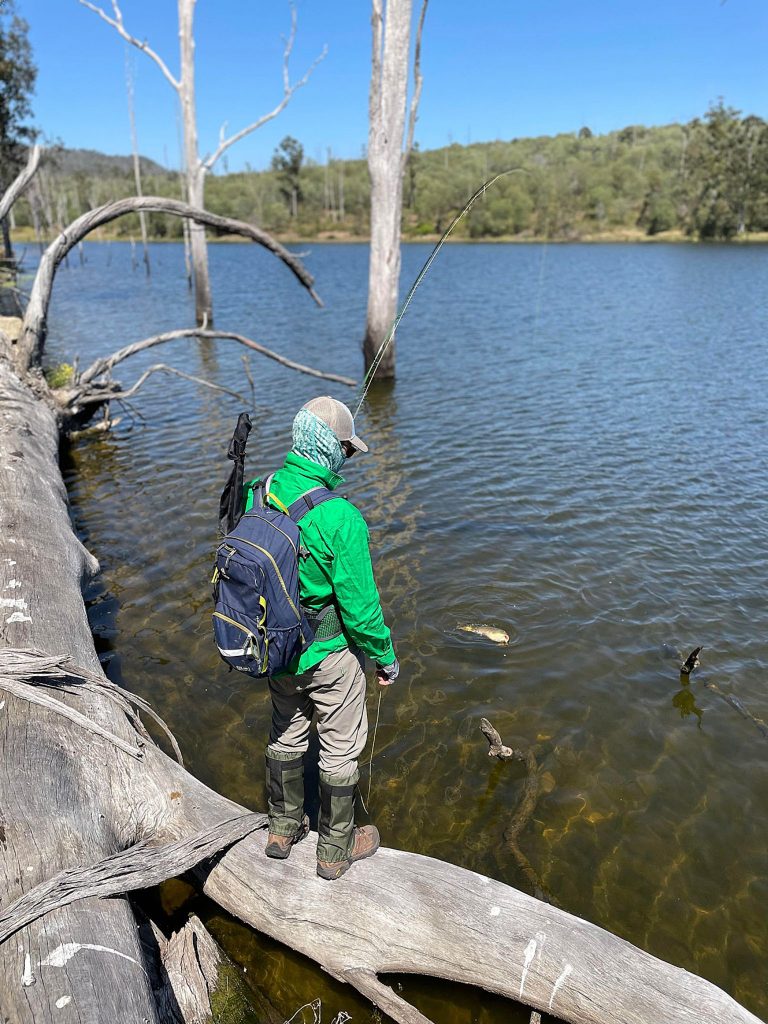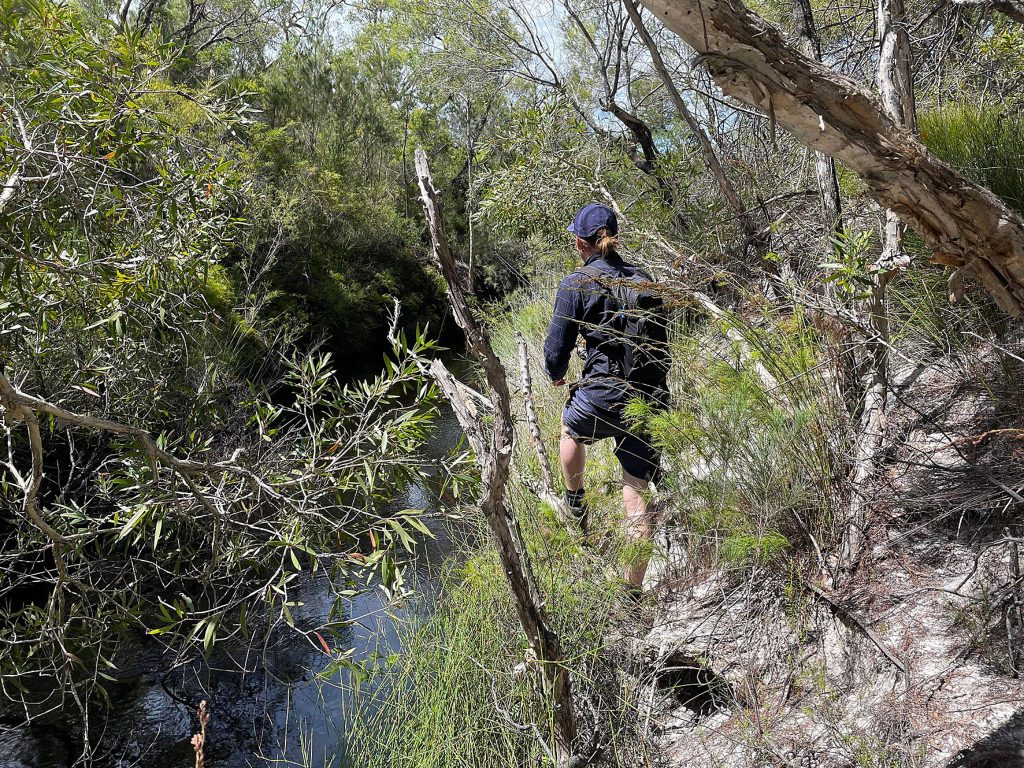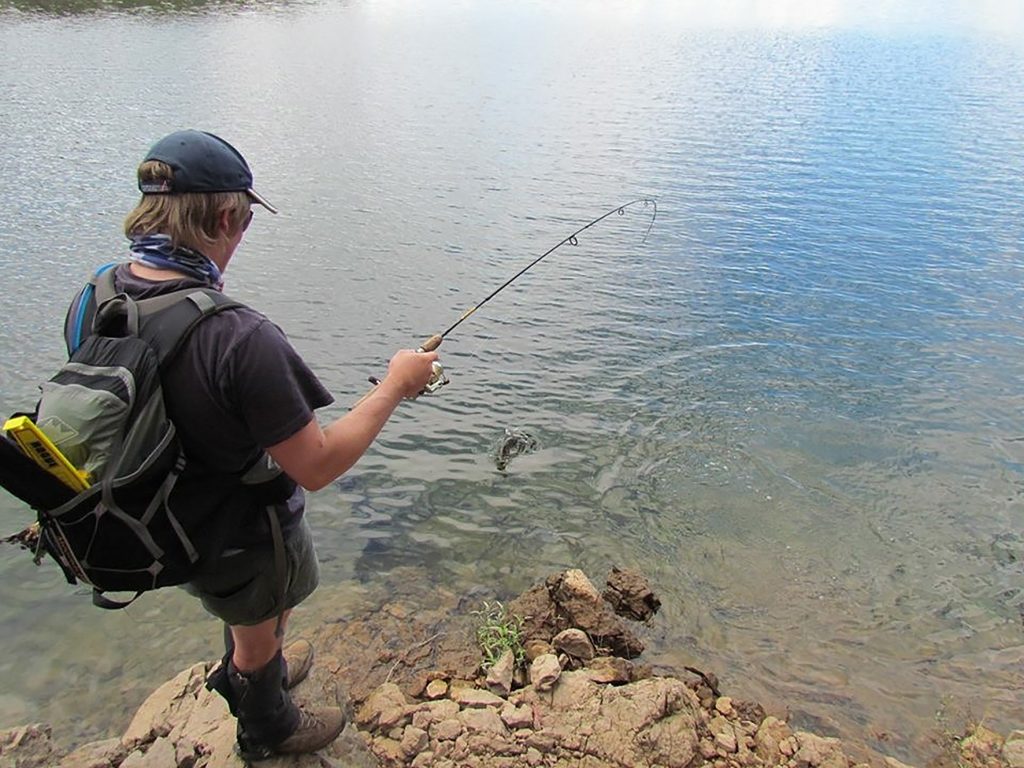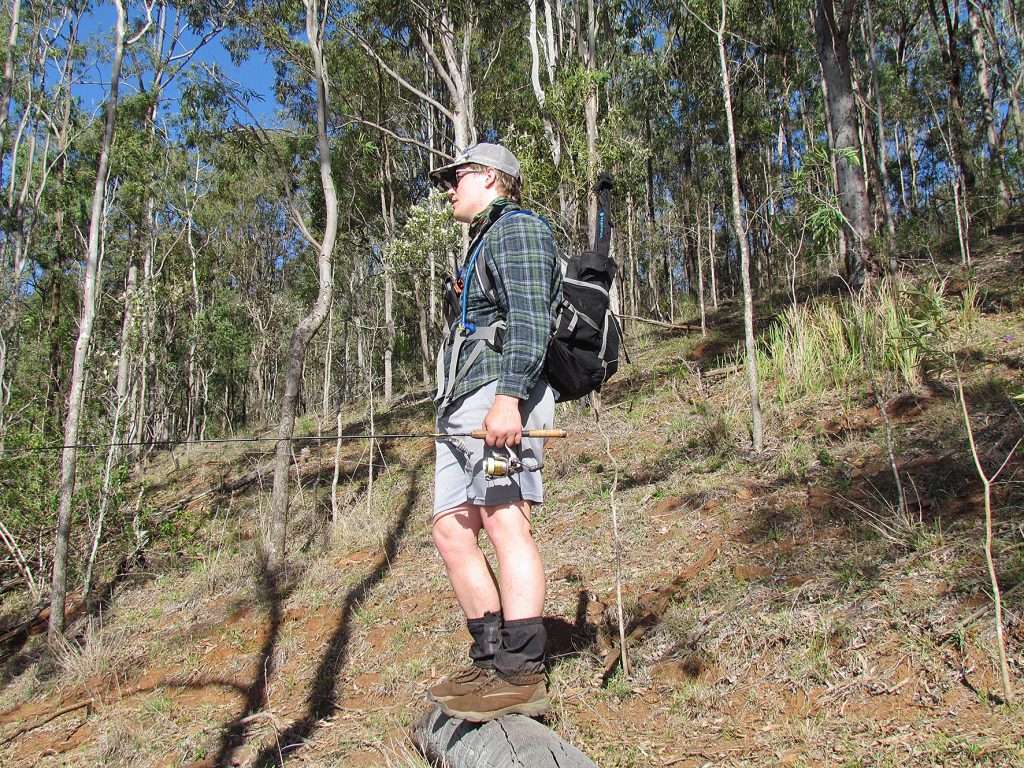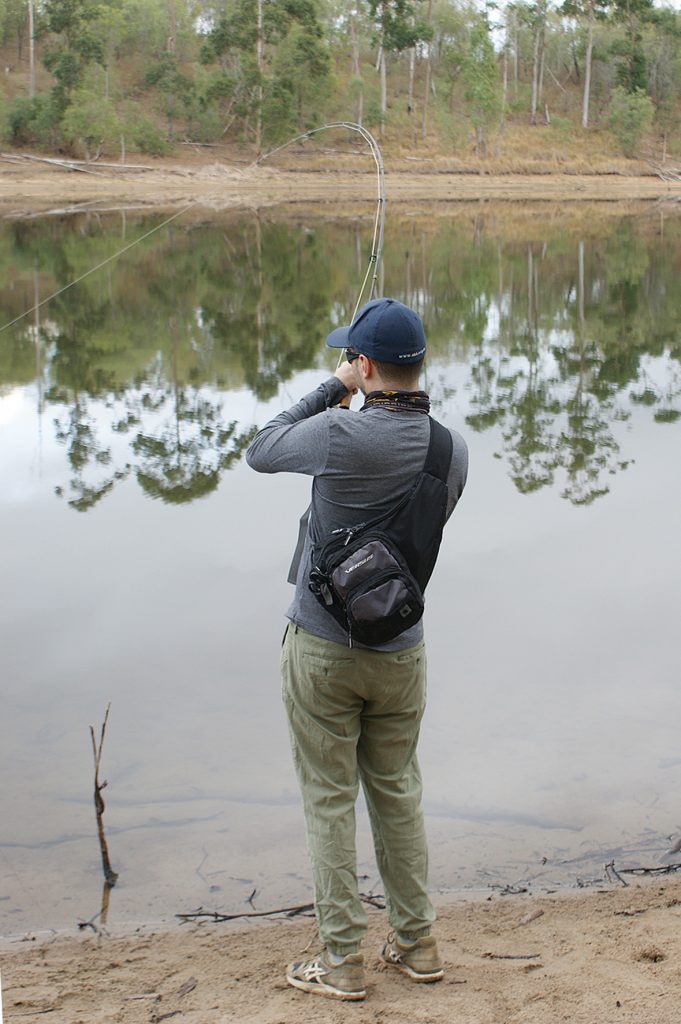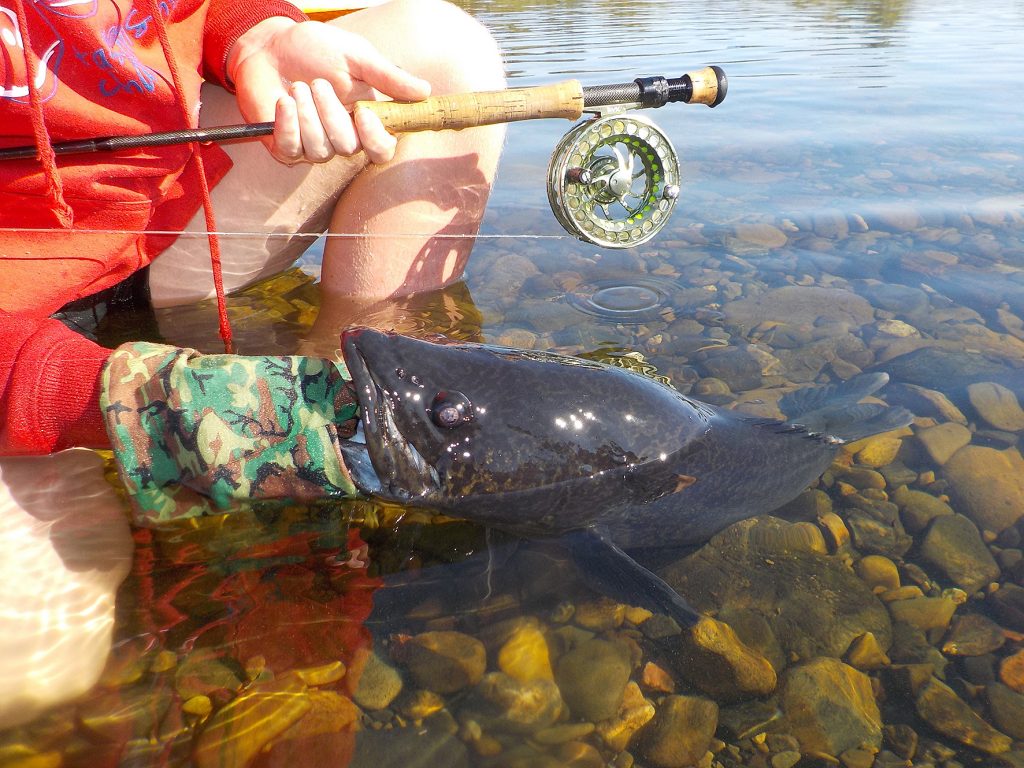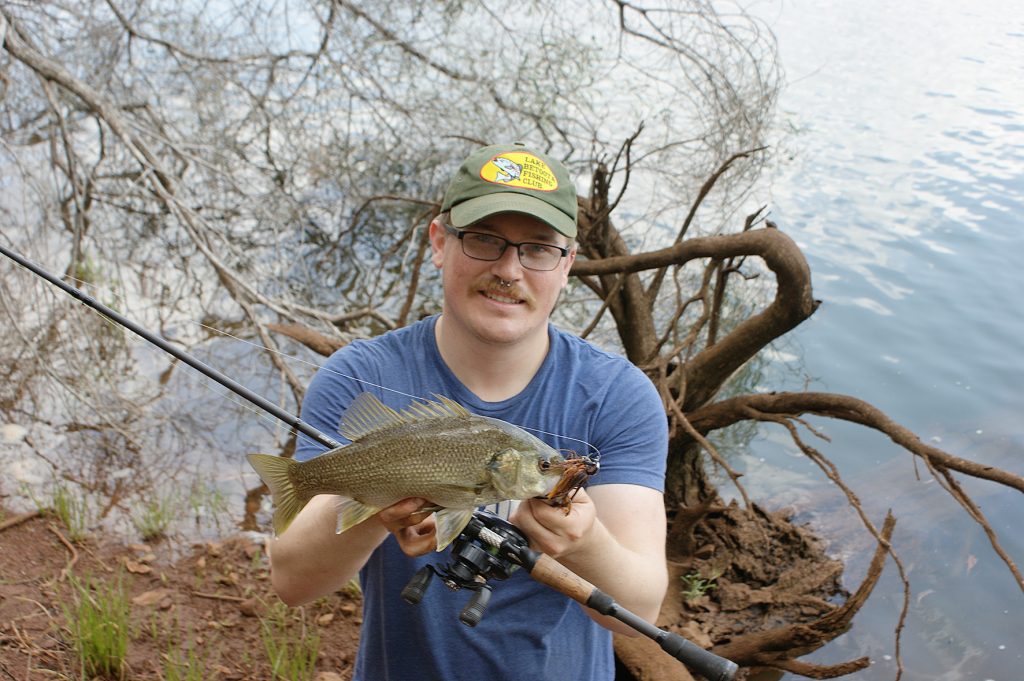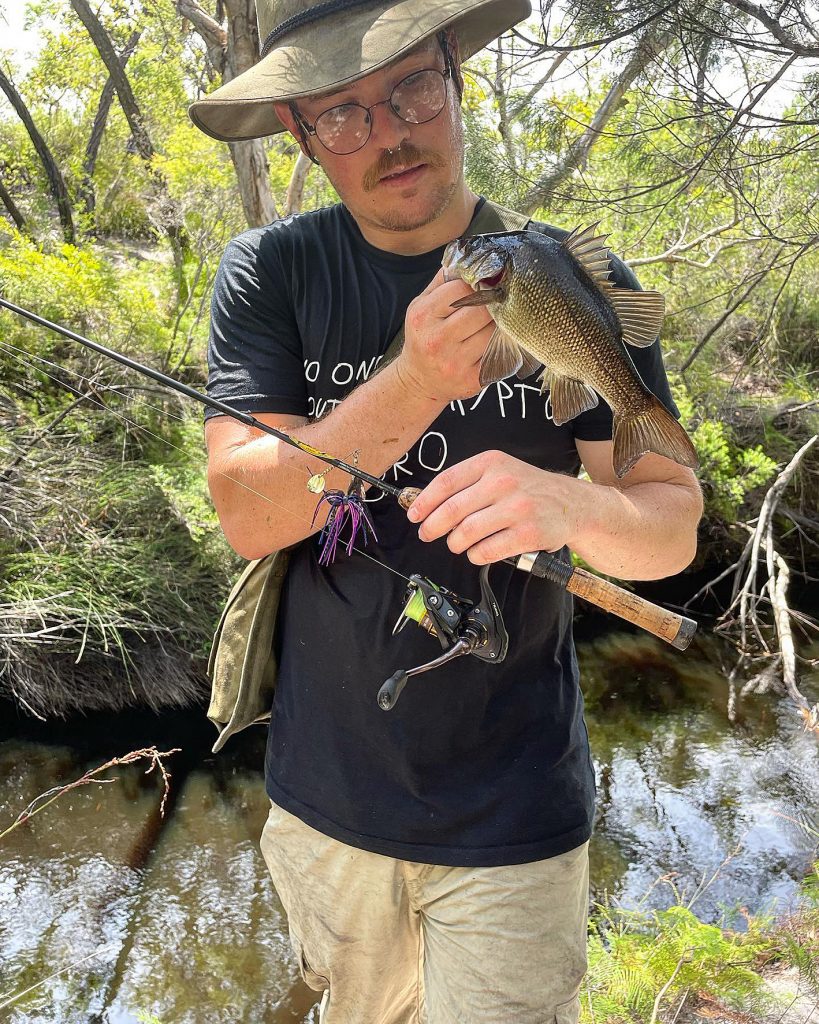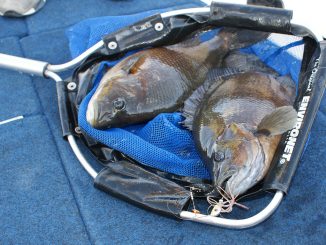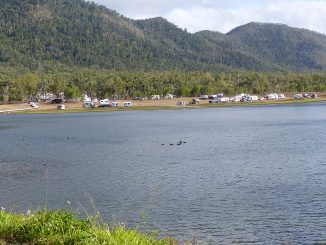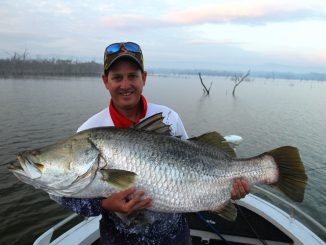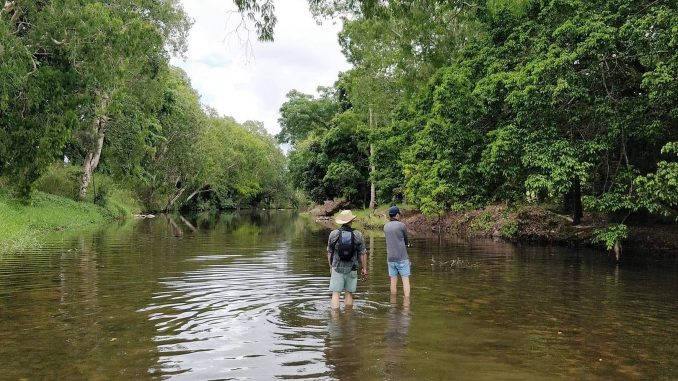
- By Robert Thornton
It’s easy to think that to access really good fishing you need a boat, but this is just not true. Some of my most memorable and successful trips have been on foot, and given that I am still boatless, I’d say there’s a few more of those to come!
While a vessel can open up certain waterways for anglers, there are still those little pockets that don’t receive a lot of fishing pressure where a boat just can’t reach, or isn’t properly suited to. For these places, we need to use our legs.
Putting in that extra effort to hike into the backcountry where others don’t get – where a boat is totally out of the question – is still my favourite way to fish, especially for bass. I’ve never seen not owning a boat as a disadvantage. Rather, I tend to choose venues where land-based fishers are at an advantage over boaties, the key often being that I am able to access water that a boat cannot.
It’s also worth remembering that right now we’re coming off the back of large-scale flooding events around much of the country, and this will kick-start a process of long-term gain for the environment. Rivers will be running high and full of nutrients, and plants will be blooming and driving the insect life that depends on it. The larger the flood, the longer this period lasts.
There really is no better time to be getting on the foot falcon to find a fish or two!
No thanks, I’ll walk
When I was a kid I used to love reading articles by anglers like Warren Steptoe and Andy McGovern. Their contemplative musings and glossy photos of trophy freshwater fish really brought their land-based adventure stories to life. These days I enjoy reading and watching content from Robbie Alexander for the same reasons. These columns really made me want to go land-based hunting for species like sooty grunter, jungle perch, trout and Murray cod, which I didn’t have available to me in Brisbane.
These anglers would choose to walk long distances to fish from the bank, and had honed their craft to make them as deadly as any boatie. They’d also turn each trip into an adventure, taking time to sit quietly and observe nature from one of terra firma’s many hidden vantages.
In my teen years, if no one was willing to drive me I’d jump on public transport or a pushbike to get myself to the limits of Brisbane’s suburbia and hike into the scrub as far as the dwindling daylight hours would allow. Catching little bass in these clear streams with a heavy pack on gave me a rush that I still get now when I don the boots and go bush! I really enjoy taking in the surroundings and wildlife, which you tend to feel part of when you’re standing amongst it!
In some places walking is the only option, such as in a small overgrown creek that’s too skinny for any craft and only accessible by walking overland. However, there are situations where it’s possible to use a boat but more logical to be on foot, such as polaroiding fish around the edges of a lake. Sight fishing from the bank gives the angler the option of hiding behind cover or crouching down quickly, or stopping on a dime to keep the fish unaware of your presence. Basically, stalking fish from the bank means you are stealthier, you can fish where boats can’t, and you’re more easily able to get into a good position for casting or observing.
Compact kit
One disadvantage of fishing this way is that it limits how much gear you can carry. It’s important to find the balance between what you can carry comfortably and what you need to cover all your bases for safety and fishing.
Good clothing is something I prioritise when kitting up for a land-based freshwater adventure. In a lot of places I hike into, there is long grass, snakes, and a variety of horizontal spiky vines that act as perfect tripwires if you’re not careful. This is why I always make sure I have adequate footwear and leg protection in the form of good-quality hiking boots, and in places where the ground level is particularly unfriendly, long pants and gaiters.
Gumboots are a cheap and effective alternative to hiking boots, especially if the going is tough but not too long. Long distances in gumboots can get uncomfortable, but a short trudge through the nasties is fine. The same applies to waders, however waders have come a long way in recent years, and these days a good pair will keep you dry, allow you to cover ground comfortably, and protect you from teeth and thorns below the waist. Having grown up in Queensland I’ve only worn waders once or twice, but I can’t recommend them enough in our southern states where blackberries, tiger snakes and icy cold streams are the norm.
Clothing that is breathable and allows you to stay cool while exerting lots of energy during a hike is preferred. Much of my adventure fishing happens during the warmer months, and chafing through clothes that aren’t designed for trekking is no way to start a big trip.
If you’re planning to go a long way, good, energy-rich food for the trail can help get the legs working. Trail mixes, muesli bars and fruit are my favourites, along with the odd bit of bushtucker identified and snaffled along the way.
Bringing water is a non-negotiable for me, even if my chosen arena is a crystal clear spring-fed stream. You never know when a stream like this may suddenly become unsafe to drink from, plus it’s wise to have a safe primary option, with clean stream water acting as a good backup option should something unplanned happen. Filtering straws such as the Life Straw and other similar hiker’s toys are great to carry if you’re worried about water. Bear in mind too, as you drink and process your water your pack will get lighter, so drink up!
Some places I visit have been all but reclaimed by nature, and I used to like the idea of wielding a machete to work my way through dense undergrowth and shrubs. I now realise that swinging a sword indiscriminately at some plants might be bad for the environment. If you find yourself up against really thick noxious weeds, a pair of secateurs is handy for cutting through select vines and making a path for yourself. I learned that trick from a Robbie Alexander Youtube video!
Trudging along the bank of freshwater bodies anywhere in Australia puts you at a heightened risk of crossing paths with snakes. Some places present a greater danger, however it’s always a good idea to have at least a basic first-aid and snake bite kit, not just for snake bites but for anything that may go wrong.
Your fishing gear will have to sit around these essentials, so condensing your usual selection for your target species is an inevitability. I like to make sure I have a spare fishing set-up (if my plan is to fish only with one outfit). Multi-piece rods broken down and stowed inside or wrapped carefully on the outside of packs are very space and weight efficient, and have saved my adventures from disaster on more than one occasion.
Some anglers prefer to carry two rigged up outfits as they fish, and this is perfectly fine in some environments, but in more plant-rich riparian zones I find moving around with two assembled rods a hindrance.
If you want to go the extra mile with safety, devices like EPIRBs, GPSs and satellite phones can be a good idea, especially if you plan on trekking further, or doing multi-day trips.
On the topic of multi-day trips, you will have to take condensing to the next level with your packing if this is your plan. I don’t do very many trips like this, so that’s an article for another time, and probably from another scribe.
Plan your attack
Preparation can be the difference between success and a disaster in this game, so make sure you have a basic plan of attack. With that said, you also want to be adaptable. For example, a track you were looking at on Google Maps might not be as navigable as you first thought, or a path you’ve been following for years may suddenly become impassable. Being thorough with your planning and scouting out alternative routes and even having back-up locations in mind is never a bad idea. I can remember once trying to access a river to fish for bass with a friend, and on our normal route down we came across a section of the hill that had collapsed and become a cliff. We were able to call on our knowledge of the river that we’d gained by studying maps of the area and go back to the car and re-route. We ended up having a good day further upstream!
Other people may be different, but I like to start with a plan even if I know there’s a high chance of deviating from it. A basic plan gives me a starting point and a direction, and I can work from there.
Going with a friend is a great way to maximise the experience, and I rarely, if ever, go on long hikes in search of freshwater trophies on my own anymore. Apart from the obvious that it’s safer and you can carry more gear, another angler can provide a fresh perspective with decision-making, aid in landing fish, take photos, and help keep the morale up as you painstakingly slide your way through spiky plants. In a sight-fishing scenario, a friend is invaluable as an observer while you get yourself ready to make a cast at your quarry… unless they’ve relegated you to observer.
A companion is an extra pair of eyes, legs, hands and also a spare brain – keep this in mind when you plan your adventure!
Staying safe
Being prepared also means being prepared for disaster. I would recommend that you carry at least one torch in your pack, even if you’re not planning to stay the night, and to have at least some basic survival skills. I’ve only ever felt like I was going to have to stay the night somewhere I wasn’t planning to once, and in the end we managed to find our way back to the car, but the torch and lighter I was carrying in my rear pocket were ready!
Another precaution that should be common practice is letting someone know where you’re going, and when they can expect you back. The film 127 hours, the true story of a man who got his arm trapped under a rock while hiking, shows him having to amputate his arm with a pocketknife and pair of pliers because no one was looking for him. He didn’t tell anyone where he was going, and ended up paying a terrible price. Because of this film I always tell someone my plan, whether it’s a friend, family member or housemate. If you don’t come home when you said you will, this person can get a search started sooner and in the area where you’re likely to be. It’s not nice to think about, but safety is no joke when you venture out into the Australian bush.
Returning to snakes, there’s one simple trick most seasoned hikers will know regarding snake safety, and that is making plenty of noise with your feet and keeping your eyes on the ground as you walk through the scrub. Most venomous snakes in Australia will hear you and move out of the way, remembering that black, brown and tiger snakes are generally more afraid of you than you are of them, and will only strike if cornered. If you see any snakes on your trip, give each other a wide berth and you won’t have any problems.
The other potential danger is for northern anglers. Crocodiles can and do make their way into the tiniest little freshwater creeks at times. If fishing up this way, adhere to warning signs and local advice, and if it doesn’t feel right, don’t risk it.
A different perspective
I think fishing in this way can give an angler a new perspective on their fishing. Rather than confining myself strictly to the bank, I tend to see my legs and backpack as just another vehicle I can use to get to the water. For example, once a few years ago a buddy and I fished our way up a small tidal creek for bass until the creek became fresh and too shallow even for our kayaks. Luckily we had our backpacks with us and ended up heaving what gear we could upstream on foot and having a real adventure, hiking and wading many kilometres and nailing multiple bass from the fresh, tannin-stained pools of this coastal stream.
If you’re in a boat fishing anywhere, it’s never a bad idea to have a bit of gear on board that will allow you to pull the tub up and have a bash from the bank. Being on the bank doesn’t necessarily disadvantage you, and should never be sniffed at – at this rate, it seems human bodies are cheaper to fuel than combustion engines!
If you’ve never set foot into the unknown wilderness in search of a place free of any obvious human interference to cast lures, think about how much rarely-fished ‘pedestrian only’ water we have in this country. Walking in and out is a sustainable way to enjoy the outdoors and its fisheries, while stretching the legs and putting you in the middle of our beautiful and primeval Australian bush. Just be sure to take everything out that you came in with, leaving only footprints and confused fish.
First published in 2022

